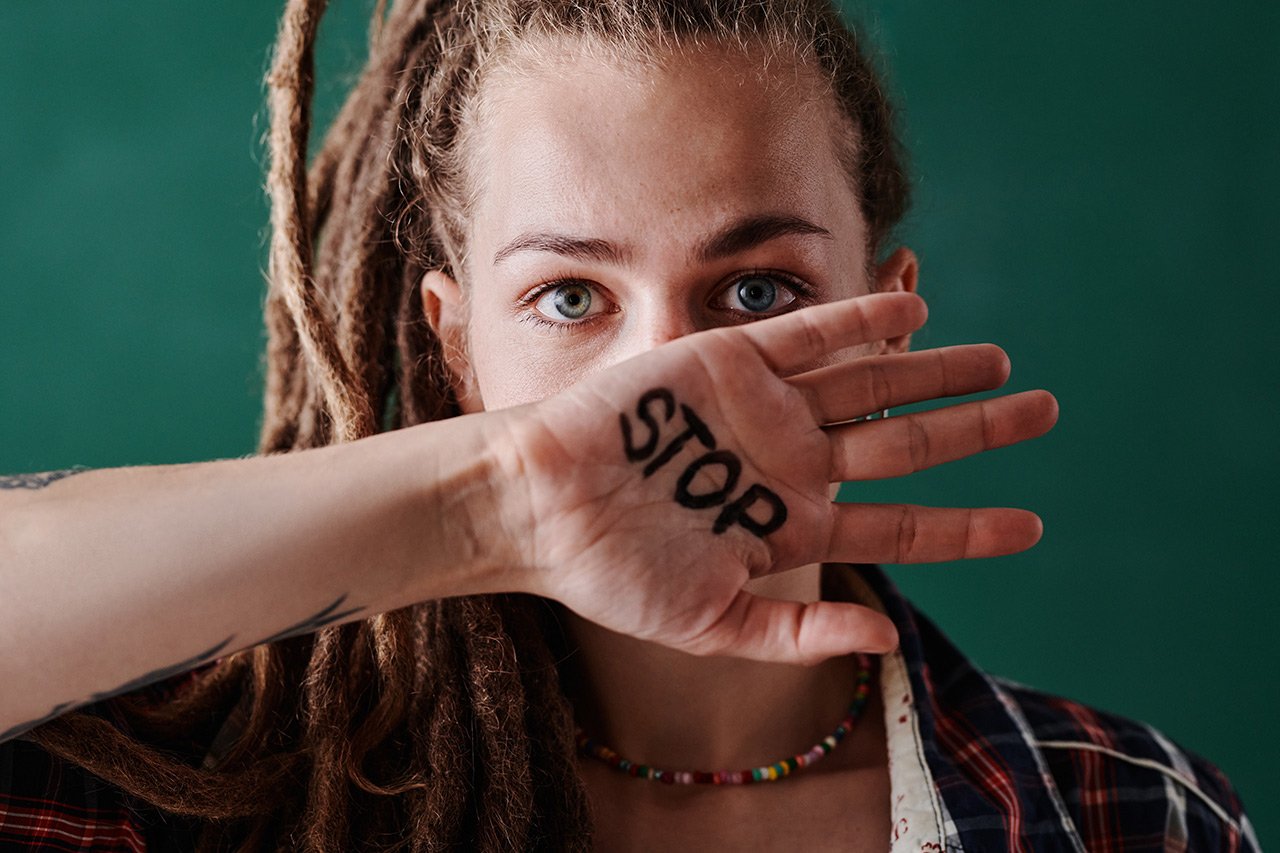
Sexual assault impacts millions of Americans of all genders, ages, and backgrounds. Sexual violence can occur when dating turns abusive or forceful or in deliberate or random acts of violence. April is Sexual Assault Awareness Month, a moment to pause and consider the sweeping impacts of sexual assault, especially on young people, and to work toward preventing violence. Sexual assault happens more commonly than most people are aware of, and it remains a taboo topic despite how frequently people are assaulted, injured, or abused. Victims may experience guilt, shame, fear, or stigma around their experience, making it difficult to talk about their feelings and making them further susceptible to trauma.
According to a 2018 study, one in five U.S. women experienced attempted or completed rape during their lifetime. However, sexual assault affects boys and men as well – about a quarter of U.S. men reported some form of sexual violence. Sexual assault is especially prevalent among teens. It is predicted that one in three American teenagers will be the victim of emotional, sexual, or physical abuse. Almost half of all college women have reported an instance of non-consensual or abusive behavior in a dating context. And, among the men and women who report instances of sexual abuse, a staggering number of them experience the abuse between the ages of 11 and 17. Both boys and girls can be victims of teen dating violence, though girls are at a slightly higher risk. LGBTQIA youth and racial minority groups are disproportionately likely to experience teen dating violence. For many young people, being a victim of sexual abuse increases the likelihood of further violent experiences before and during adulthood. In other words, if a teen is a victim of one form of sexual abuse, they are more likely to face future harm.
Sexual assault may seem like something that can occur in private and happen just once. However, because it can be difficult for young people to identify their boundaries clearly, sexual assault can often recur. Abusive relationships can grow out of a single episode of verbal, emotional, or physical harm that becomes complicated for the victim involved, making it difficult for them to find a way out. Sexual harassment, assault, and abuse can also happen in online spaces. This year, the National Sexual Violence Resource Center is centering on online safety with the theme “Building Online Spaces Together.” In their view, “for too long harassment, cyberbullying, and sexual abuse and exploitation have come to be expected as typical and unavoidable behaviors online.”
Sexual abuse that starts as verbal or online harassment is particularly dangerous, as it can often go unseen. Online harassment carries emotional and relational consequences for the people involved, especially teens. Harassment is difficult for victims to talk about because it describes many unhealthy or violent behaviors. Confusing signals from peers, pop culture, and the internet can also blur the lines, making it hard for teens to distinguish between positive attention and cyberbullying, stalking, or harassment. At one end of the spectrum, a harasser might bully victims with verbal denigrations, unwanted sexual content, and insults. Other forms of abuse might combine lying and manipulation with coercive physical or sexual behaviors. Sexual assault describes a broad range of activities, from rape to unwanted touching to non-consensual sexual conduct. Abusers might use multiple forms of harm to test their victims’ limits over time. Spotting any of these signals or associated behaviors in teens is critical to offer a clear view of what is happening and help teens find safety.
Victims of sexual assault are highly likely to experience depression, anxiety, post-traumatic stress disorder, sleeplessness, and mistrust of people around them. Victims of sexual harm are likely to face difficulty finding intimacy or healthy desire with future partners. Unhealthy habits such as smoking, drinking alcohol, or taking drugs can often show up as victims attempt to numb their feelings or escape from coping with reality. Victims of sexual assault are vulnerable to common sexually transmitted infections and diseases, including HPV, gonorrhea, syphilis, chlamydia, and HIV. Female rape victims may find themselves with an unwanted pregnancy. A striking number of rape conceptions occur each year in the U.S. – at last count, three million conceptions were the result of rapes. Unwanted pregnancy from a coercive situation puts a woman in a highly precarious position, both materially and psychologically.
While there is no proven method to prevent sexual assault, parents and adult role models can start by promoting healthy relationships and creating space for conversation around intimacy, sex, and emotional connection. Focus on giving teens the tools they need to communicate effectively and set personal boundaries. When it comes to low-income teens or youth from marginalized communities, it is all the more critical for trusted adults to cultivate healthy attitudes toward relationships and model appropriate conduct without reinforcing the stigma that victims might face. Adults can also help teens practice digital consent and set boundaries in texts and online conversations. It is vital for anyone who spots a teen in a risky situation to intervene when they see harmful content and behaviors and promote online communities that value respect, inclusion, and safety. At Maryvale, we know the value of providing preventative, protective care for at-risk youth. Learn more about the services we provide children, teens, and their families to transform abusive cycles and foster a healthy, positive outlook.






